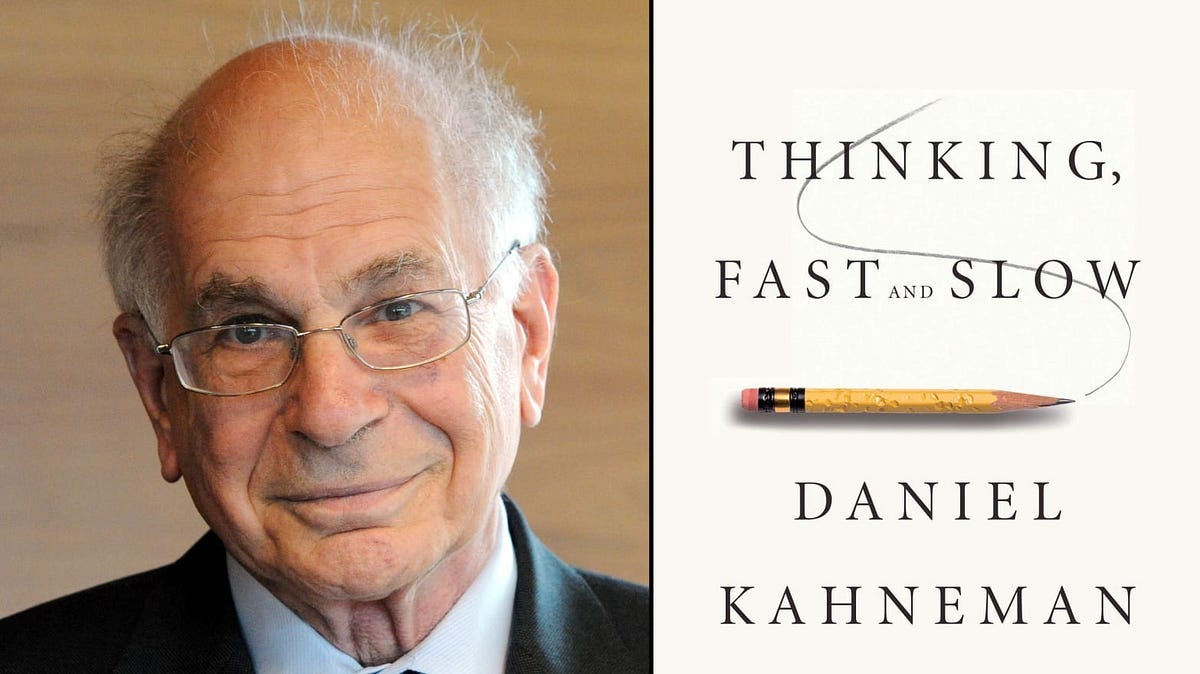When can intuition be trusted?
The Do-It Newsletter #38 Decoding Decision-Making in a new chapter of The 5 Acts
Hello everyone,
The utility of intuition and expert judgment in decision-making is an interesting and fiercely debated topic. That's because it produces such confusing and inconsistent results:
On the one hand…
Chess grandmasters can sense the best move in a heartbeat and spend the rest of their time calculating if they made a mistake.
On the other hand…
Economists' predictions have been shown to be (far) worse than a dart-throwing chimp.
However…
Executives can feel the energy in the room and infamously use it to establish huge business deals.
Yet…
Cold and objective checklists outperform successful hiring decisions based on “gut feelings” and vibes.
So, how can we reconcile this inconsistency?
Today’s topic: Decision-making
Starting from this edition of the Do-It Newsletter, I am trying out a new format. Each newsletter will be centered around a specific theme instead of a collection of various topics. I will also branch off the curated resources into their own posts.
The solution to intuition
Fortunately, the solution to intuition turns out to be rather simple. Intuition and expert judgment shine when an environment is stable (similar to what it has been in the past) and familiar (experienced many times before). Both of these features are crucial components. If you are an expert in one field, you will likely be wrongly confident that your experience will translate to better decisions in an entirely different one. Also, if you have been in a highly dynamic environment for a long time, such as in the stock market, you may wrongly conclude you have superior foresight to less experienced actors. These errors of intuition are caused by our cognitive and emotional biases (as is the main topic in Thinking Fast and Slow by Daniel Kahneman).
Although stable and familiar environments favor intuition, they unfortunately do not neutralize our biases. That's why it's important also to question the magnitude of the impact, cost, and risks involved in the decision. If the stakes are high, then the best approach is to double-check like a chess grandmaster who verifies their intuition before making a critical move.
New Decision-Making Chapter of The 5 Acts Book!
The role of intuition is only one of the aspects of Decision-Making. The freshly published chapter of The 5 Acts provides a complete explanation of how to select the best option for a choice you are considering. Here's the short version:
The key rule of decision-making is recognizing that we are not limited to the options presented to us. We can always generate new and better solutions.
The first step in the decision-making process is to ensure we don’t waste time and effort evaluating nonstarters. To achieve that, we define hard requirements and eliminate any options that do not comply.
To proceed, we must know what type of decision we face, as they warrant their own methods. I distinguish two types of decisions:
Type-1 Decisions have a large scope, with likely longer resolution times. Examples include fixing a sleeping problem, losing weight, hitting a revenue target, or making a promotion. To resolve these problems, many interventions need to take place. There are countless options to consider and an incalculable number of arrangements. Any form of calculation would be inadequate, and instead, I suggest merging decision-making and planning into one by plotting options and workload on a timeline. With type-1 decisions, the aim is not to optimize for the best options, but for the ones you (and your team) are most likely to implement successfully.
Type-2 Decisions live at a more specific level, often within Type-1 Decisions. Type-2 Decisions have a set of options with positive or negative attributes that allow them to be compared to each other. Examples include diagnoses by a doctor or a hiring choice. Intuition can suffice if an environment that is stable and familiar, yet still, calculated decision-making is objectively more reliable as it removes biases from the equation. However, calculation comes with its own dangerous pitfalls to beware of and avoid. To calculate, make a simple formula in which the negative and positive attributes of each option are equally weighted and measured. The highest scoring option is ultimately selected (granted it passed the minimal threshold).
Great resources on Decision-Making:
While researching and writing on the topic, I found several great resources. These are the ones I found most useful:
Thinking, Fast and Slow: Daniel Kahneman (& Amos Tversky)
If you had to read one book on cognitive biases and our innate reasoning fallacies, I'd recommend it be this one. It's a distillation of years of scientific research by the author and Amos Tversky and is a very accessible read.
🔗 Link to the book on Amazon
Problem with Probability - by Nassim N. Taleb
Nassim Taleb is a brilliant author, but his more technical writing can be difficult to understand. Nevertheless, once digested, this article on the incorrect usage of probability was highly clarifying.
🔗 Link to the pdf paper on Nasim's website
Brett Hall on Bayesian updating
This article on Bayesian updating helped me clarify the potential pitfalls of using calculation-based decision-making. Specifically for using raw probabilities when a function is required and also for confusing probability with superiority.
🔗 Link to the article on Brett's website
That’s a wrap
I’d love to hear your thoughts on decision-making. Did I make mistakes? Did I miss out on important aspects? Let me know! You can leave a comment on Substack, send me a private message, or reply to this e-mail. Until the next time
, Edwin





